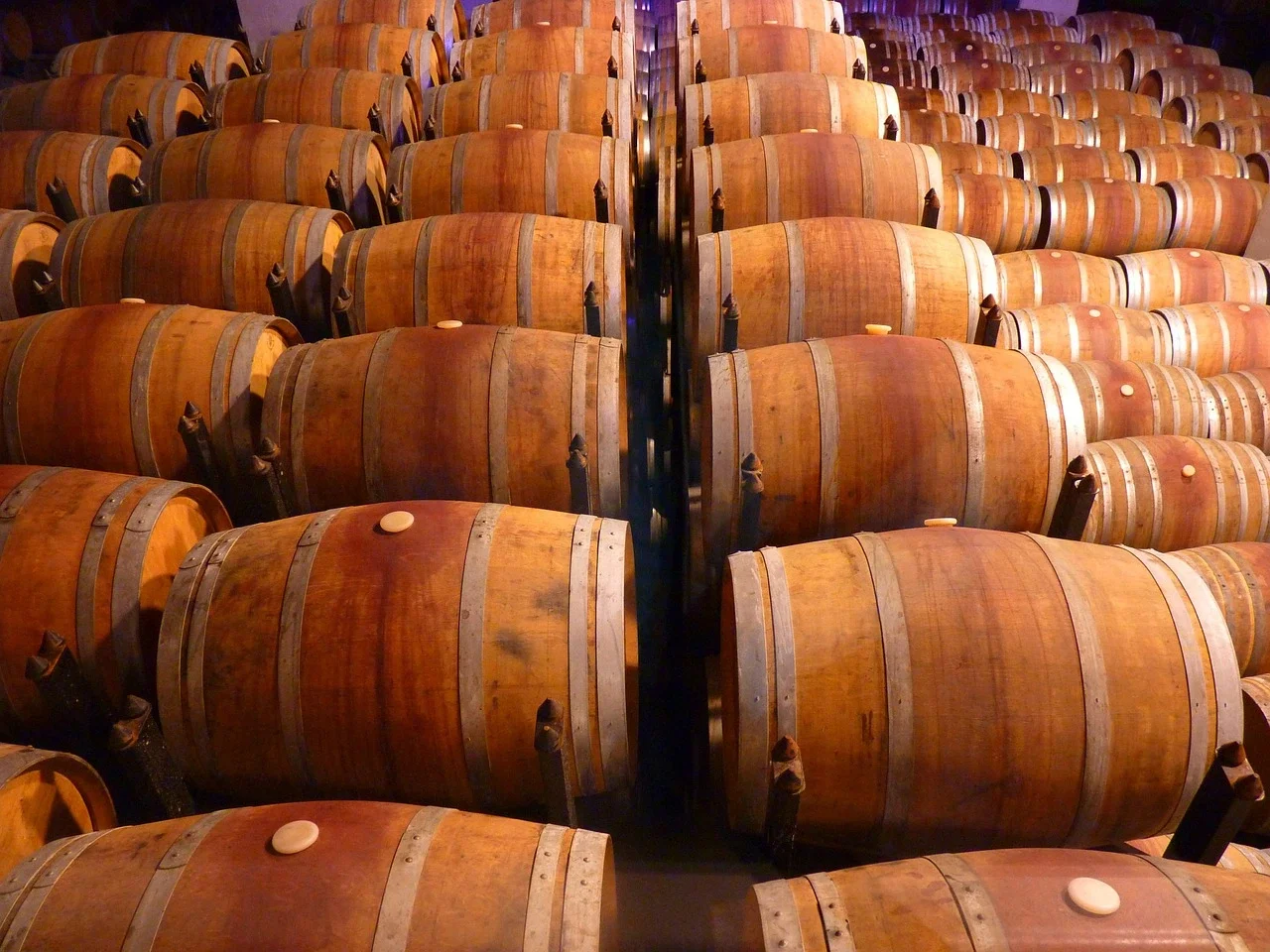
Photo by LoggaWiggler on Pixabay
Introduction
The use of different casks, often referred to as barrels or casks, plays a significant role in shaping the taste, aroma, and appearance of whiskey. Whiskey is typically aged in wooden casks, and the type of wood, the previous contents of the cask, and the duration of aging all contribute to the final characteristics of the spirit. Depending on the cask, whiskey can be affected in the following ways:
- Type of Wood:
- Oak: Oak is the most common wood used for whiskey aging. It imparts various flavours and compounds to the whiskey, such as vanilla, caramel, and tannins. These flavours can mellow and enhance the whiskey's profile over time.
- Other Woods: Some distillers experiment with different types of wood, like cherry, maple, or chestnut, which can impart unique flavours and aromas to the whiskey.
- Previous Contents:
- Virgin Oak: If the cask is new and hasn't been used to age any other spirit, it's called virgin oak. This tends to impart more intense flavours and colour to the whiskey.
- Ex-Bourbon Casks: Many Scotch and Irish whiskeys are aged in barrels that previously held bourbon. This can lend sweet, caramel, and vanilla notes to the whiskey.
- Sherry Casks: Sherry casks, often used in Scotch production, can contribute fruity, nutty, and sometimes spicy notes.
- Wine Casks: Whiskey aged in casks that previously held wine (e.g., red wine, port, or Madeira) can pick up the wine's characteristics, like fruity or wine-like flavours.
- Duration of Aging:
- The length of time whiskey spends in a cask has a significant impact on its taste and aroma. Longer aging generally results in a smoother, more complex whiskey with deeper flavours.
- Temperature and Climate:
- Whiskey aging is influenced by the climate where the casks are stored. In hot climates, whiskey tends to mature more quickly due to temperature fluctuations, leading to more interaction with the wood. In colder climates, aging may be slower, and the whiskey may retain more of its original character.
- Char Level and Toasting:
- The level of charring or toasting on the inside of the cask can influence how whiskey interacts with the wood. Heavier charring can introduce smoky and caramelised flavours.
- Size of the Cask:
- Smaller casks have a higher surface area-to-volume ratio, which means the whiskey comes into contact with the wood more quickly. This can lead to faster aging and more intense flavour extraction.
- Aroma and Appearance:
- The aroma of whiskey is influenced by the volatile compounds released from the wood, such as vanillin, lignin, and phenols. Different woods and aging conditions can lead to a wide range of aromas, from vanilla and caramel to spice and smoke.
- The colour of whiskey is primarily derived from the wood and can range from pale gold to deep amber. Caramelisation of sugars in the wood contributes to the colour, and longer aging generally leads to a darker hue.
Examples of Casks
Different types of casks and their previous contents can impart a wide range of flavours and aromas to whiskey. Here are some examples of cask types and the tasting notes they can contribute to whiskey:
- Sherry Casks:
- Pedro Ximénez: Pedro Ximénez (PX) sherry casks are known for imparting rich, sweet, and dark fruit notes to whiskey. Tasting notes may include raisins, figs, dates, dark chocolate, and a pronounced sweetness.
- Oloroso: Oloroso sherry casks can add nutty and spicy flavours, along with dried fruit notes like orange peel and apricot.
- Port Casks:
- Port wine casks: Whiskey aged in port casks often exhibits fruity characteristics such as red berries, cherries, plum, and a subtle sweetness. There may also be hints of spice and dark chocolate.
- Wine Casks:
- Red Wine: Whiskey aged in red wine casks can have notes of red fruits like strawberries and raspberries, as well as floral undertones and a slight acidity.
- White Wine: White wine casks can impart lighter, more citrusy notes, such as lemon, green apple, and white grape.
- Cognac Casks:
- Cognac casks: Cognac casks can add a layer of complexity with flavours like dried apricot, honey, floral notes, and subtle oakiness.
- Bourbon Casks:
- Ex-Bourbon casks: Bourbon casks typically contribute vanilla, caramel, and coconut notes. These casks are often used for Scotch whisky and many Irish whiskeys.
- American Oak:
- Whiskey aged in American oak casks (often used for bourbon and some Scotch) can feature vanilla, caramel, butterscotch, and a slightly spicy character.
- Japanese Mizunara Oak:
- Mizunara oak casks from Japan can impart unique flavours like sandalwood, coconut, oriental spices, and a touch of tropical fruitiness.
- Rum Casks:
- Whiskey aged in ex-rum casks can take on flavours of molasses, toffee, brown sugar, and tropical fruits like banana and pineapple.
- Peated Scotch Casks:
- Casks previously used to age peated Scotch can introduce smoky and earthy notes, along with a hint of medicinal character.
It's important to note that the impact of the cask on the whiskey can vary based on the duration of aging and the distillation process used by the distillery. For a desired flavor profile, master blenders and distillers choose casks carefully and control aging conditions.
Whiskey enthusiasts often appreciate the diversity of flavours and aromas that different cask types can bring to the spirit, leading to a rich tapestry of whiskey varieties on the market.
Conclusion
The choice of cask wood, its history, aging conditions, and the previous contents of the cask all interact to create the distinct taste, aroma, and appearance of whiskey. This is why you'll find a wide variety of whiskey profiles on the market, with each producer aiming to craft a unique and appealing spirit.